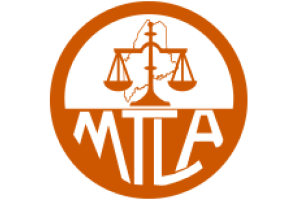Pedestrian Accidents
Pedestrian accidents often cause devastating injuries and fatalities. Even at low speeds, the impact of a vehicle or a subsequent hard fall on the ground can cause severe harm. Pedestrian accidents present a serious public health problem in the United States. Over 65,000 pedestrians are injured in accidents each year according to the National Highway Traffic Safety Administration.
Injuries commonly resulting from a pedestrian being hit by a motor vehicle, truck, motorcycle or bicycle include:
- Cuts, bruises, scars
- Fractured bones
- Broken teeth
- Spinal cord injuries
- Traumatic brain injury
- Paraplegia
- Quadriplegia
- Coma
- Death
New Hampshire Laws Protecting Pedestrians
Motorists are legally obligated to act with care when pedestrians are walking along the side of a road or are attempting to cross. When passing a pedestrian, a motorist can be no closer than three feet. Motorists are also required to yield the right of way to pedestrians on sidewalks, marked crosswalks, and most intersections. New Hampshire law prohibits drivers from trying to overtake another vehicle that is stopped to allow a pedestrian to cross. Motorists must also exercise extra care when driving in the vicinity of a child or a visibly confused, incapacitated, or intoxicated person.
Investigating a New Hampshire Pedestrian Accident
In order to make a claim for injuries arising from a pedestrian accident, the pedestrian has the burden of proving that the vehicle operator was at fault. This can be more challenging than you might think. Even in what most people would consider to be a fairly straightforward case where a driver hit a pedestrian in a crosswalk, it is not uncommon for the driver to make excuses such as one that we frequently hear: “He just ran out in front of me.” Similarly, in cases involving a pedestrian who was hit while walking along the side of the road, motorists have argued that the pedestrian was walking too far out in the road or that they weren’t able to see our client due to poor lighting conditions or obstructions.
Regardless of whether the motorist appears to be clearly at fault or there is a dispute from the outset over whether the driver was negligent, if the accident results in serious injuries, a thorough investigation should be undertaken as soon as possible after the accident. Even if the police investigate the accident, the motorist’s insurance company almost always will have its own investigator photograph the scene, take measurements, and speak to witnesses. Generally police investigations are very well done, but, unfortunately, errors can and do frequently occur. If these errors are significant enough, fault for the accident can be misplaced. This is one of the primary reasons insurance companies will perform their own investigation and is the reason our firm will immediately send out an accident reconstruction expert to investigate and collect evidence. Small, often overlooked details, can make all the difference in the outcome of a case. To illustrate: One of our clients was hit while in a crosswalk in 2012. The force of the impact threw our client approximately 25 feet. The driver claimed that our client was not crossing in the crosswalk and, unfortunately, there were no witnesses. Because our client was well outside of the crosswalk when the police and ambulance arrived and because our client was unable to give a statement due to the severity of his injuries, the investigating officer cited our client for crossing the road illegally, adding insult to injury. Our client suffered a brain injury and didn’t recall anything about the accident, so he wasn’t able to say anything more than he “usually” makes it a point to cross in a crosswalk.
Fortunately our client’s family contacted our firm shortly after the accident and our investigator was able to take detailed, high-resolution photographs of the accident scene and the crosswalk in particular. One photograph turned out to be of critical importance: a scuff mark running perpendicular to the road. The motorist’s insurance company claimed that the scuff mark was left by a random car and was not left by our client’s shoe scraping the road after the impact. Our investigator blew up the photo and was able to see the exact print left in the crosswalk and then matched that to our client’s boot tread. The combination of that evidence, together with the perpendicular scratch marks on our client’s boot, resulted in the insurance company reversing its denial of the claim and we were able to favorably resolve the case.
Negotiating With an Insurance Company
Immediately after a pedestrian accident, the insurance company for the motorist who hit you will assign an “adjuster” to the case who will attempt to contact you to get a statement. The adjuster will also begin investigating the case and generally hires an expert in accident reconstruction to inspect the scene, take photos, etc. Insurance adjusters are trained in tactics designed to take advantage of accident victims who rarely—if ever—have been injured in an accident, are unfamiliar with the process, and are distracted by all that goes along with being injured (paying bills, trying to make ends meet, going to doctors’ appointments, etc.). Their goal is to get the accident victim to make errors that will hurt their case so that they will accept less money for their injuries. At the risk of stating the obvious, insurers are not in the business of paying out money and, as such, invest heavily in training their adjusters in the art of negotiation.
Many accident victims are not aware that the negotiation (i.e., getting you take less than you should) starts the minute the adjuster first speaks to you. One common insurance adjuster tactic is what is referred to as “making nice,” which generally involves the adjuster making vague promises that you will “be take care of” or assurances that the motorist is accepting responsibility for the accident. It is only after you ask for more than the low-ball amount that the adjuster is authorized to pay that you realize that you’ve been duped. To make matters worse, during the months and months that the adjuster was “making nice,” he/she was doing everything possible behind the scenes to either establish that you were wholly or partially at fault or that your injuries are not as bad as you claim they are (or both).
After the “gloves are off” and the adjuster shows his/her true objectives, the adjuster proceeds with stage two: wearing you down. Even for accident victims who are experienced negotiators, dealing with an insurance adjuster with everything else going on in their lives can be overwhelming—something that adjusters know all too well and are willing to exploit. Their goal in this stage of the negotiation (if you could even call it that, since they never had any intention of offering more than a low-ball amount) is to get you to give them your bottom line. The insurance company knows that if and when an accident victim ends up calling an attorney for assistance, knowing what his/her bottom line is will give the adjuster a leg up in subsequent negotiations with his/her attorney. Simply put, revealing your bottom line to an insurance adjuster almost always works against you and is always a problem if your attorney believes that you should receive considerably more than you told the adjuster you were willing to take.
Stage three of negotiations: stall. Insurance adjusters know that stalling always works to their benefit, particularly if the delay results in a claim not being filed within the Statute of Limitations. Moreover, the more time that goes by, the more likely it will be that evidence is lost and that witnesses’ memories will fade. Stalling also serves to increase the financial pressure that most accident victims and their families experience following an accident involving serious injuries. Unfortunately, many people make the mistake of telling the adjuster about their financial woes and unwittingly give the adjuster additional leverage in negotiations.
Peter Thompson & Associates: Skilled and Experienced Advocates for Victims of Pedestrian Accidents
Our award-winning attorneys have over 60 years combined experience investigating pedestrian accidents and negotiating with insurance adjusters. We have achieved outstanding results for our clients, collecting over $15,000,000 in settlements and awards last year alone. While we are proud of our awards and results, even more important to us is the positive feedback we receive from our clients. We have consistently received the highest possible ratings from our clients for “overall satisfaction” and “responsiveness,” with 100% of our clients stating they “would recommend” our firm to others (and they do). If you or a loved one has been hit by a car, motorcycle, truck or bicycle and are seriously injured, call 800.804.2004 or fill out the online form to speak with one of our attorneys today.












